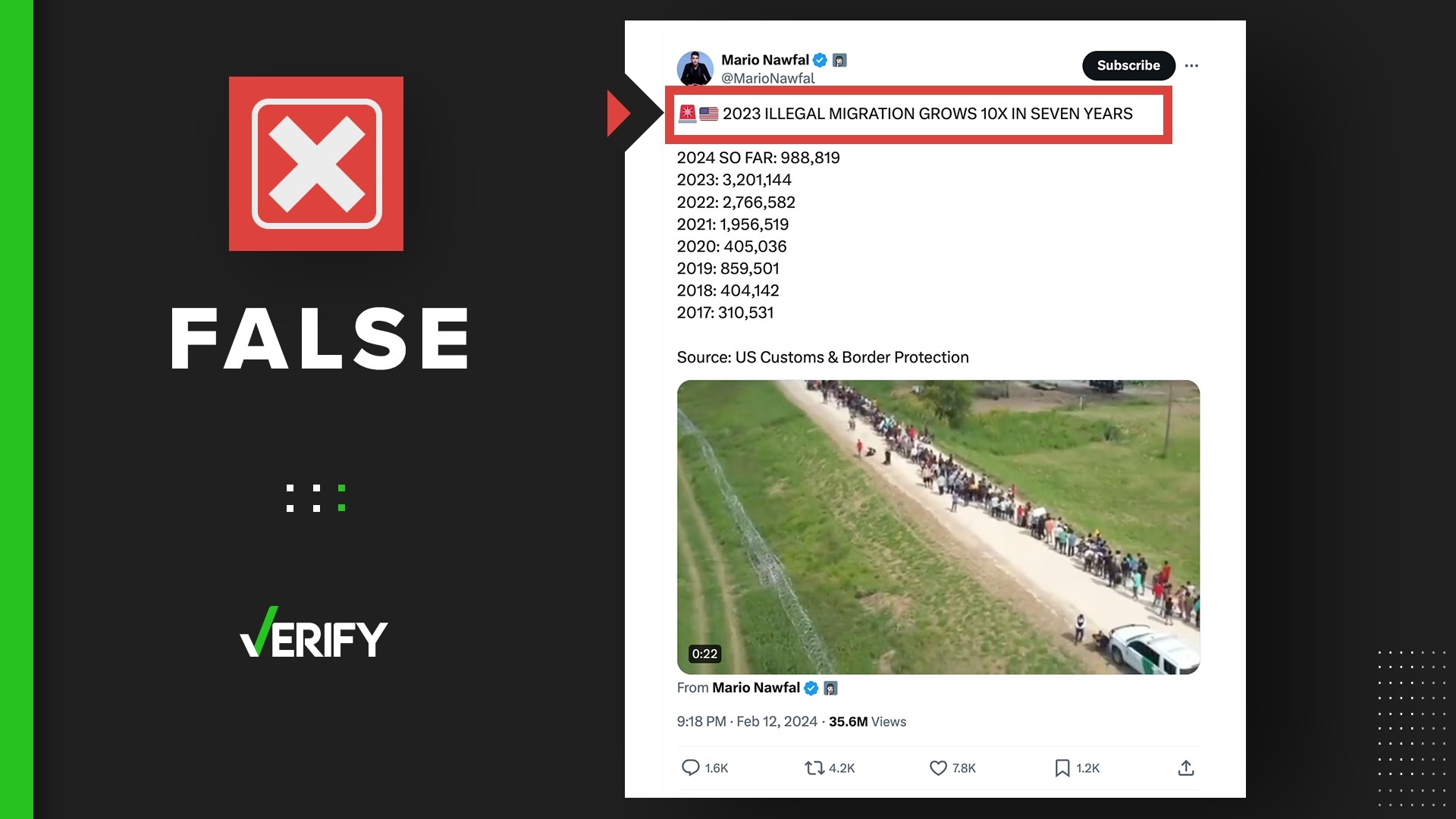The United States is facing a growing crisis along its southern border as large numbers of migrants try to illegally enter the country from Mexico.
A recent viral post with more than 35 million views claims the number of migrants trying to enter the U.S. illegally grew tenfold between 2017 and 2023. It cited U.S. Customs and Border Protection as the source of the data.
THE QUESTION
Has “illegal” immigration grown tenfold between 2017 and 2023, as the viral post claims?
THE SOURCES
- U.S. Customs and Border Protection (CBP) data
- Julia Gelatt, associate director of the U.S. Immigration Policy Program at the Migration Policy Institute
- Aaron Reichlin-Melnick, policy director at the American Immigration Council
THE ANSWER
No, “illegal” immigration has not grown tenfold between 2017 and 2023. While the viral post uses real statistics from U.S. Customs and Border Protection, it is comparing two different data sets. The actual number is closer to sixfold.
WHAT WE FOUND
The viral claim uses real statistics on the U.S. Customs and Border Protection (CBP) website, but it compares numbers from two different data sets to calculate the increase over a seven-year period. When you compare the same years using either data set, they both show about a sixfold increase.
Both data sets also count more than just the number of people who are crossing the border illegally.
So what are the real numbers?
U.S. Border Patrol encounters increased from 310,531 in 2017 to 2,063,692 in 2023, according to the CBP website. That’s about a 665% or a 6.7-fold increase.
The number of total enforcement actions in 2017 was 526,901, which rose to 3,201,144 in 2023. That’s about a 608% or 6.1-fold increase.
CBP uses fiscal years when it provides data.
What the viral post gets wrong
The post uses U.S. Border Patrol encounters for 2017 through 2020. For 2021 through 2023, it uses total enforcement actions, which includes Border Patrol encounters and additional CBP activity. That comparison is where the tenfold increase comes from.
Aaron Reichlin-Melnick, policy director at the American Immigration Council, explained this as “comparing apples to oranges.”


The difference between encounters and total enforcement actions
Border Patrol encounters are made up of the number of apprehensions made by the agency and, for dates after 2020, the number of expulsions made under a pandemic-era policy known as Title 42. CBP defines apprehensions as “the physical control or temporary detainment of a person who is not lawfully in the U.S. which may or may not result in an arrest.”
Total enforcement actions is a broader category that includes the encounters defined above as well as CBP’s Office of Field Operations (OFO) encounters with people known as “inadmissibles.” The number of “total enforcement actions” will always be a larger number than Border Patrol encounters for the same time frame.
“Inadmissibles” are not people who are entering the U.S. illegally. CBP defines them as people who seek lawful admission into the U.S. but are denied, people seeking humanitarian protection under U.S. laws, and people who withdraw an application for admission and return to their home countries within a short timeframe.
For example, people who enter the United States through the Biden administration’s Uniting for Ukraine parole program and its parole program for Cubans, Haitians, Nicaraguans and Venezuelans show up in the data as inadmissible, according to Julia Gelatt, associate director of the U.S. immigration Policy Program at the Migration Policy Institute.
This story is also available in Spanish / Lee este artículo también en español: Publicación viral afirma falsamente que la 'inmigración ilegal' ha crecido diez veces entre 2017 y 2023

